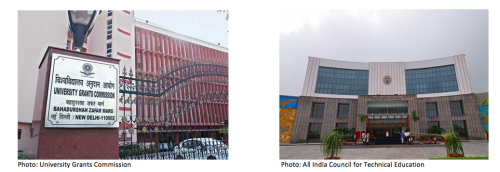April 11, 2013

For institutions in the United States, accounting credentials from India and Pakistan can be especially difficult to interpret. Typically, comparative education researchers and credential evaluators in the U.S. seek to determine the comparability of foreign studies to domestic equivalents based on several criteria including:
• admission requirements for the academic program in question;
• course content covered via classroom instruction;
• specific knowledge base and skills tested via examination;
• the nature of the program in the source country.
– Do partial studies transfer into other academic programs?
– Does the completed program provide eligibility for higher academic programs?
– Does the completed program allow eligibility for professional registration, etc.?
– Is the completed program terminal?
Official accounting credentials in India are issued by the Institute of Chartered Accountants of India (ICAI) http://www.icai.org/ and official accounting credentials in Pakistan are issued by the Institute of Chartered Accountants of Pakistan (ICAP) http://www.icap.org.pk/web/index.php .
Both the ICAI and ICAP programs inherit much of their structure from the British system, which frequently uses a “Qualifications-Based-Assessment” approach in which all program requirements are based on examination results, and students become eligible for examinations through either academic studies, professional experience, or some combination of both. Another aspect of the British “Qualifications-Based-Assessment” method is that examinations may be graded as “pass-fail” and thus have no grades or marks associated with them.
From a comparative education perspective, the ICAI and ICAP credentials do not fit very well into the traditional mold of a U.S. educational program. ICAI and ICAP programs have very flexible “admission requirements” since eligibility for examinations can be derived from both academic and professional qualifications and classroom instruction is not necessarily a central component in every case.
Despite the fundamental differences between ICAI/ICAP and U.S. programs, the comparability of ICAI/ICAP examinations to U.S. academic levels is well established. Some of the best research done on this topic is available through NAFSA (the Association of International Educators) in the PIER Workshop Report on South Asia published in 1986 and the PIER World Education Series published in 1997. Both publications are based on research performed by a hand-picked group of experts who conducted in-country investigations and site-visits to many institutions. It has been documented and confirmed that ICAI/ICAP examinations do provide “transferrable credit” into other academic programs in India and Pakistan, and much of the comparative education research since the PIER reports has concluded similarly that the following “placement recommendations” be made for ICAI and ICAP examinations:
• Passed ICAI/ICAP Foundation Examinations are comparable to one year of undergraduate coursework in business administration and accounting in the U.S.;
• Passed ICAI/ICAP Intermediate Examinations are comparable to an associate degree in in business studies and accounting (two year of undergraduate coursework) in the U.S.;
• Passed ICAI/ICAP Professional/Final Examinations with membership are comparable to a completed Bachelor of Business Administration in Accounting, a Bachelor of Science in Accounting or another similarly named degree in the U.S.
For U.S. institutions seeking to understand and process ICAI and ICAP qualifications, it is important to be aware that many details we expect to see in most academic documents might not be available. ICAI/ICAP usually issue credentials that prove completion of the program, but not individual examination titles, grades/scores, and other information that would be included in a “transcript” or similar document. Additionally, ICAI and ICAP do not typically include a description of how individuals become eligible for or exempted from certain examinations. Thus, we recommend that U.S. institutions ask applicants for the following documentation along with any official ICAI/ICAP credentials:
• Descriptions/Titles of the ICAI/ICAP examinations during certain years (similar to a curriculum) and preferably descriptions/titles of exams taken and passed by an individual – this will allow a better comparison to specific U.S. courses*;
• Documents for any previously completed academic coursework – this may provide a straightforward academic basis for exam eligibility or exemption;
• Resume and other professional experience documentation – this may add details for any exam eligibility or exemption derived from experience.
*Samples of ICAI and ICAP exam descriptions are available along with other comparative education data in Credential Consultants’ GRADE™ Database http://www.credentialconsultants.com. Additionally, the National Association of State Boards of Accountancy (NASBA) compiles CPA examination results taken in the U.S. for a given year, including breakdowns of performance by country of residence, educational institutions attended, etc. The 2012 Candidate Performance Book is can be found here https://nasbareport.com/index.php?main_page=document_product_info&cPath=6&products_id=61
Although the nature of ICAI and ICAP accounting programs may differ from typical collegiate accounting programs in the U.S., they can be compared to each other in meaningful ways for both academic and professional purposes.
Authored in collaboration with the Association of International Credential Evaluators http://www.aice-eval.org (AICE) by:

Drew Feder
President of Credential Consultants, Inc.
http://www.credentialconsultants.com

Hany Arafat
Senior Comparative Education Specialist at Credential Consultants, Inc.
http://www.credentialconsultants.com

Jasmin Saidi-Kuehnert
President of Academic Credentials Evaluation Institute, Inc.
http://www.acei1.com




















